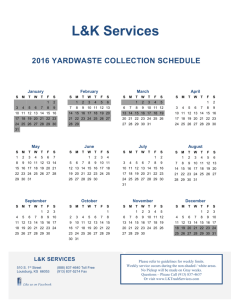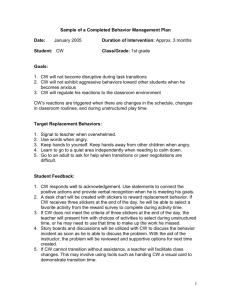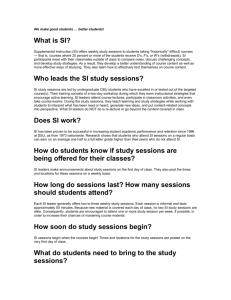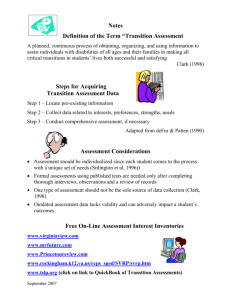FORMS FOR USE IN CLINICAL EDUCATION
advertisement
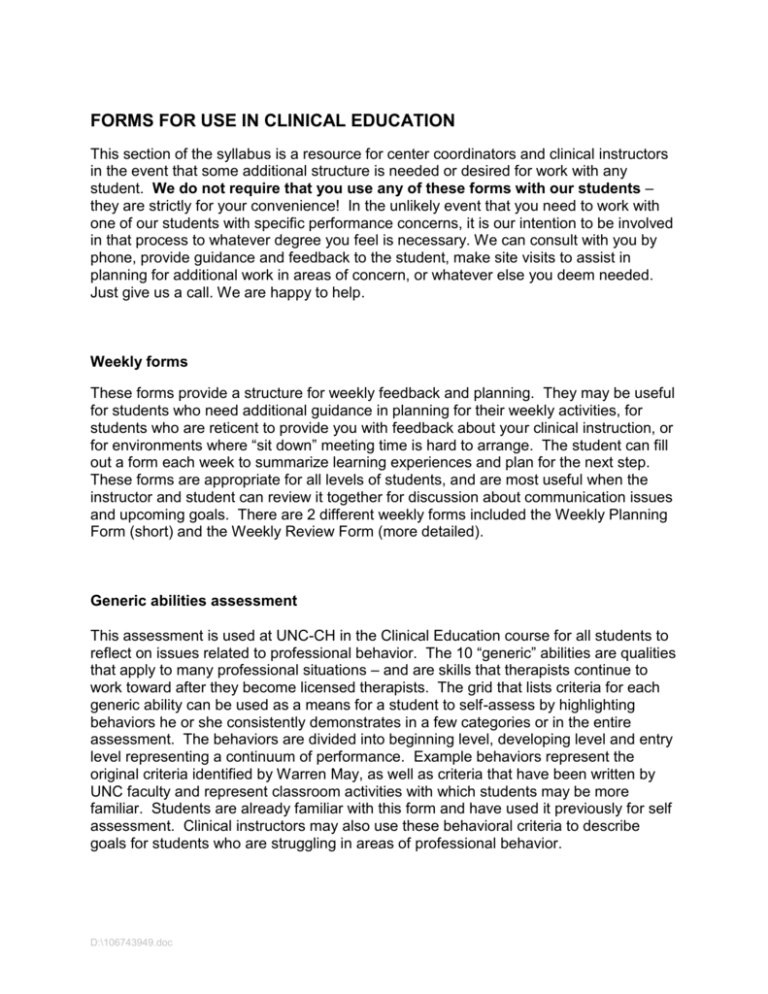
FORMS FOR USE IN CLINICAL EDUCATION This section of the syllabus is a resource for center coordinators and clinical instructors in the event that some additional structure is needed or desired for work with any student. We do not require that you use any of these forms with our students – they are strictly for your convenience! In the unlikely event that you need to work with one of our students with specific performance concerns, it is our intention to be involved in that process to whatever degree you feel is necessary. We can consult with you by phone, provide guidance and feedback to the student, make site visits to assist in planning for additional work in areas of concern, or whatever else you deem needed. Just give us a call. We are happy to help. Weekly forms These forms provide a structure for weekly feedback and planning. They may be useful for students who need additional guidance in planning for their weekly activities, for students who are reticent to provide you with feedback about your clinical instruction, or for environments where “sit down” meeting time is hard to arrange. The student can fill out a form each week to summarize learning experiences and plan for the next step. These forms are appropriate for all levels of students, and are most useful when the instructor and student can review it together for discussion about communication issues and upcoming goals. There are 2 different weekly forms included the Weekly Planning Form (short) and the Weekly Review Form (more detailed). Generic abilities assessment This assessment is used at UNC-CH in the Clinical Education course for all students to reflect on issues related to professional behavior. The 10 “generic” abilities are qualities that apply to many professional situations – and are skills that therapists continue to work toward after they become licensed therapists. The grid that lists criteria for each generic ability can be used as a means for a student to self-assess by highlighting behaviors he or she consistently demonstrates in a few categories or in the entire assessment. The behaviors are divided into beginning level, developing level and entry level representing a continuum of performance. Example behaviors represent the original criteria identified by Warren May, as well as criteria that have been written by UNC faculty and represent classroom activities with which students may be more familiar. Students are already familiar with this form and have used it previously for self assessment. Clinical instructors may also use these behavioral criteria to describe goals for students who are struggling in areas of professional behavior. D:\106743949.doc Anecdotal record This form is used in instances where a record of performance is necessary to formalize feedback with a student. The form is useful as an adjunct to other evaluation tools used for determination of grades – as a way to support your observations, in the event that specific instances need to be recalled. The situation is described in the setting, the student action or behavior that was observed is also detailed. The behavior should be described in objective terms without judgmental adjectives. The evaluator interpretation allows the CI to list possible consequences of the behavior revealing reasons for concern. The student and CI both sign the form to indicate that this feedback was shared. The student may then make comments if necessary in the final section of the form. Critical incident report form This form may also prove useful in situations where problematic behaviors in a similar category are observed with a student (i.e. safety issues). This is also useful as an adjunct to the typical evaluation done for the school. This form is designed to only include a description of the behaviors without any interpretation on the part of the instructor. Antecedents refer to events or environmental factors that preceded the behavior. Behaviors are described objectively. Consequences include any ramifications for the behavior imposed by the CI. For instance, if a safety problem has been identified and discussed with the student, the critical incident report form could be used. After the first additional safety issue occurs, the consequence could be a verbal warning and discussion of reasons for concern, but yet another instance of unsafe behavior could result in a call to the ACCE or documentation in the written evaluation. Learning Contract Form This form provides a structure for development of specific objectives and learning activities for exceptional students. In the event that you need to use this forms, the student can be actively involved in the process of developing objectives and determining appropriate activities to meet those goals. D:\106743949.doc

